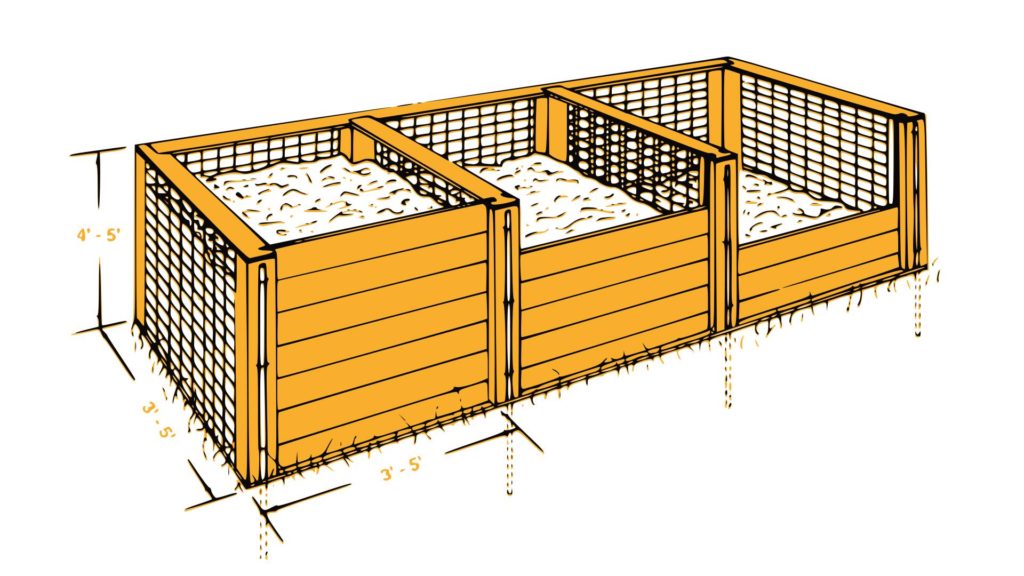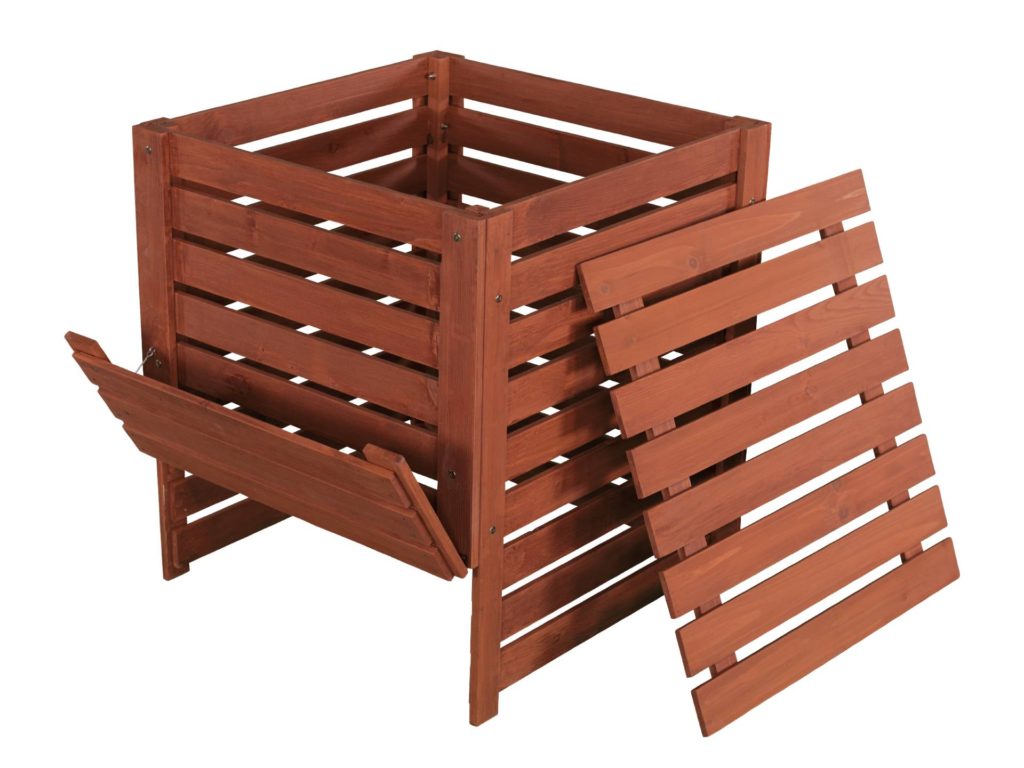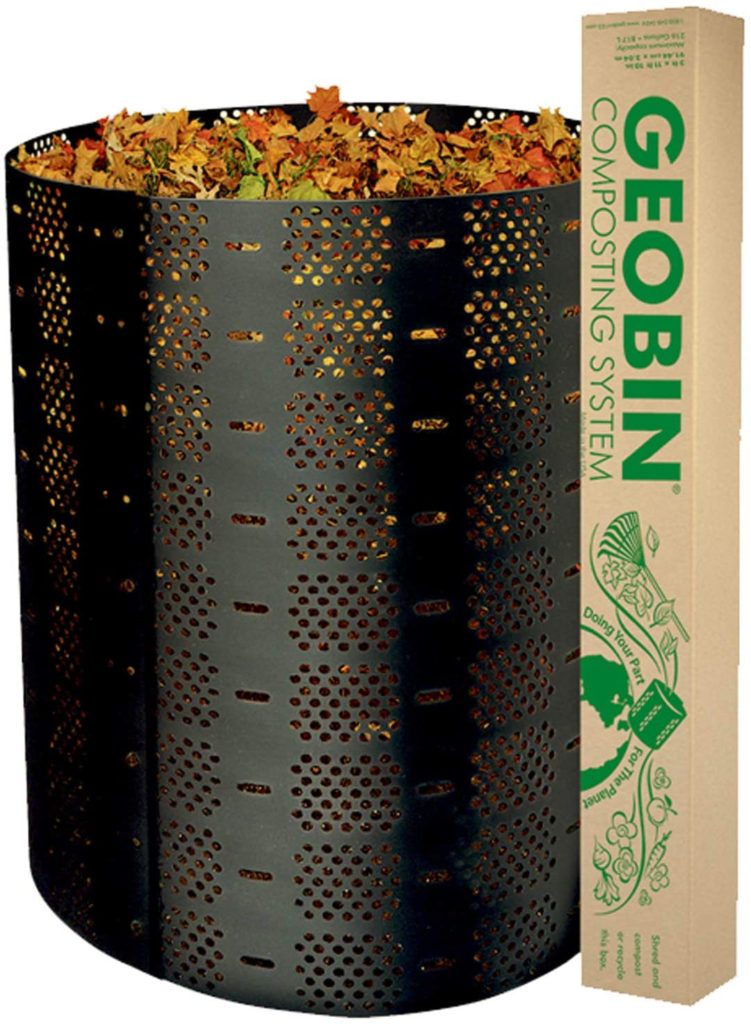How to make a composting bin for home composting?
Compost is great for gardening and farming. It improves soil structure and enriches it for healthy plant and good harvest.
Starting composting at your home is easy. All you need is some space, a compost bin (or pit) and organic materials for composting. Read the article on how to start composting for your home garden.
How to Make a Compost Bin at Home?
A compost bin is a container for storing and facilitating decomposition of organic matter. Most common compost bins have a simple structure and don’t need any technical know how to build.
Common compost bins for home backyards and gardens:
- Single-bin compost bin
- Two-bin compost bin
- Three-bin compost bin
- Tumbler / Container compost bin
- Manufactured compost bins
- Compost pit
Composting Bins
Single-bin composting bin: The most basic of composting bins is a wooden, wire mesh or masonry structure with three sides enclosed and one side open or with a removable wall. The fourth side of the bin is kept removable or open for ease of handling compost and organic matter. The bottom can be left open so that the organic matter gets connected directly with soil.
You can easily build a compost bin using some wood (lumber, pallets or wood slats) and wire mesh. Basic carpentry skills is required for marking the structure with wood. With lumber or wood slats, you can make a bin by nailing the wood into the right shape.
Untreated wood should be used for building your compost bin. Use more sturdy wood such as pine wood. Don’t use plywood or boards.
For optimal composting, the ideal size of any compost pile is 3 foot in length, breadth and height. Your bin compartment should be 3 foot by 3 foot, and 4-5 foot tall.
Air is required for composting. Your compost bin walls should not be solid. You need to leave spaces for air movement. When building with wood slats, you need to leave small gaps between each log. Don’t leave large gaps, but just enough to keep your waste from falling out. A gap of 1-2 inches between wood slats should work fine. Place your compost bin on a leg to allow air flow from bottom as well.
Two-bin composting bin: Composting requires leaving the organic matter to decay over time. When you have a single bin, you will no place to dump your organic matter when your first pile reaches 3 feet height. With two-bins, you can start a new compost pile when the first is full. This allows you to keep composting without having to wait for a compost pile to be ready.
A two-bin composting bin has two compartments, each with 3 feet sideways and 4-5 feet tall.

Three-bin composting bin: A 3-bin composting bin can be made like one- or two-bin composting bins. Here you have three bins, which give you more flexibility for continuous composting. You start with the first bin, then move to the second while the first decomposes. When your second bin is ready for composting, you start with the third one and the other two remain in different stages of composting.
Ready wooden compost bins are also available. You can buy 2-3 such manufactured compost bins and easily assemble them in your garden.

Composting Pit
Instead of building a compost bin, you can dig a pit in the ground. Where you have room in your backyard, choose a place away from your house. Make sure that the ground doesn’t collect rain water. You compost pit should also be away from your kitchen garden. A distance of minimum 6 feet should be maintained from house and your vegetable beds.
Dig a square hole with 3 feet sideways and 3-4 feet deep. For simultaneous composting, you can start another pit when one is full and composting. If animals are an issue, you can put the pits within an enclosure. Barricade it with lumber or plant branches from your garden itself.
DIY Tumbler Composting Bin
A plastic or metal container can be turned into a compost bin.
Pick a plastic container with a radius of around 3 feet. If square or rectangular, the sides should be 2-3 feet. Your container should be approximately 3 feet tall.
Drill holes in the container at the bottom and sides of the container. The idea is to make air flow possible. If your container has a lid or cover, drill holes in it too.
Place your container on legs, which can be wood blocks or bricks placed underneath.
Take straw, dry grass or wood shavings. Put it inside your container as the bottom layer. Now, take garden soil and create a 1-2 inch layer. Now, your DIY container compost bin is ready. Start adding organic matter for composting. Make sure to add at least 50% browns (straw, dry leaves, paper shreds, etc).
Manufactured Composting Bins

Don’t have the time or skill to build your own bin? Need something more easy to manage? If you are short of space, you can consider ready-made compost bins for both indoor and outdoor composting.

